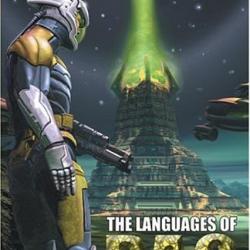Review of Classical Christian Doctrine: Introducing the Essentials of the Ancient Faith by Ronald E. Heine
This is the first installment of Reading Patristics–a review series dedicated to books about the early church fathers. These reviews will not be exhaustive summaries, but instead are meant to pique the interest of readers to pursue reading in this area of study and a guide to good books in the field.
What did the early Christians believe? How different were they from Christians today? Why do we uphold certain creedal positions? These questions continue to nag at contemporary, (theologically) conservative Christians in the United States at both the popular and academic levels. At the popular level, the success of Dan Brown’s novels opened the floodgates to whole subgenres about templar knights and historical mysteries. At the academic level, claims to have found some lost gospel or other artifacts has become routine, and “orthodoxy” in the early church is now called “proto-orthodoxy,” as “heresy” is increasingly considered an anachronism.

Ronald Heine’s Classical Christian Doctrine (CCD) is a concise and clear answer to the whirlwind of ambiguous and caricature-laden discourse surrounding the early church. Though short enough (178 pages) to leave more interested readers dissatisfied, the book serves the purpose of an introductory text aimed at undergraduates and newcomers to patristics. Heine accomplishes this by clearly marking out the primer’s scope:
What I mean by “classical Christian doctrine” in this book is those doctrines that were accepted as true by most Christians before the end of the first four centuries of the Christian era.
CCD covers doctrines being debated and formulated during the first four centuries, though he does dabble in the fifth century in order to address the Chalcedonian framing of Jesus’ two natures. Heine deftly discusses a whole swath of theological points, including all the major doctrines in the Nicene Creed; these include Logos theology, Trinitarian controversies (monarchianism), Arianism, theories of Christ’s redemptive work, baptism, ecclesiology, and eschatology.
There are several strengths to CCD, a few of which I should point out. Every chapter begins with an information box listing the key players or schools of thought and a brief description, which is incredibly useful not just in getting the lay of the land, but also in allowing Heine to introduce historical figures without taking focus off the doctrines. By keeping both the individuals and their theology linked, Heine presents readers with a historically-driven and nuanced perspective of each doctrine’s development. Many chapters begin with the data from the New Testament and then move forward chronologically.
Another helpful aspect of CCD is the incorporation of primary texts from the writings of relevant theologians or philosophers. This addition to such a short work is valuable because most authors would be tempted, for the sake of the book being an introduction, to distill and simplify as opposed to letting the various personalities speak for themselves. Readers end up not only with knowledge of the history of these doctrines, but of the players involved as well.
Unfortunately, CCD may not make it into the curricula of most undergraduate religion departments because of its largely conservative posture. While it makes very few evaluative statements and tries to remain largely descriptive, there is an implicit conservativism in Heine’s textual criticism. What I mean is that he assumes authentic and early authorship of the New Testament documents and consistently uses them to paint a picture of the first generation of believers. He does in fact base most of his descriptions on extra-Biblical sources, but the textual criticism-obsessed departments of religious studies will have already ruled out CCD; and in so doing, introductory courses in religious studies department suffer the loss of a good pedagogical resource.
Heine’s CCD is a worthy and complementary companion to Henry Chadwick’s The Early Church and Robert Louis Wilken’s The Spirit of Early Christian Thought (neither of which I will be reviewing in this series, but I highly commend them). This trio of foundational texts is a good place to start building a good grasp of patristics.
Disclosure: I received this book as a free review copy from Baker Academic, but was not required to write a favorable review.












